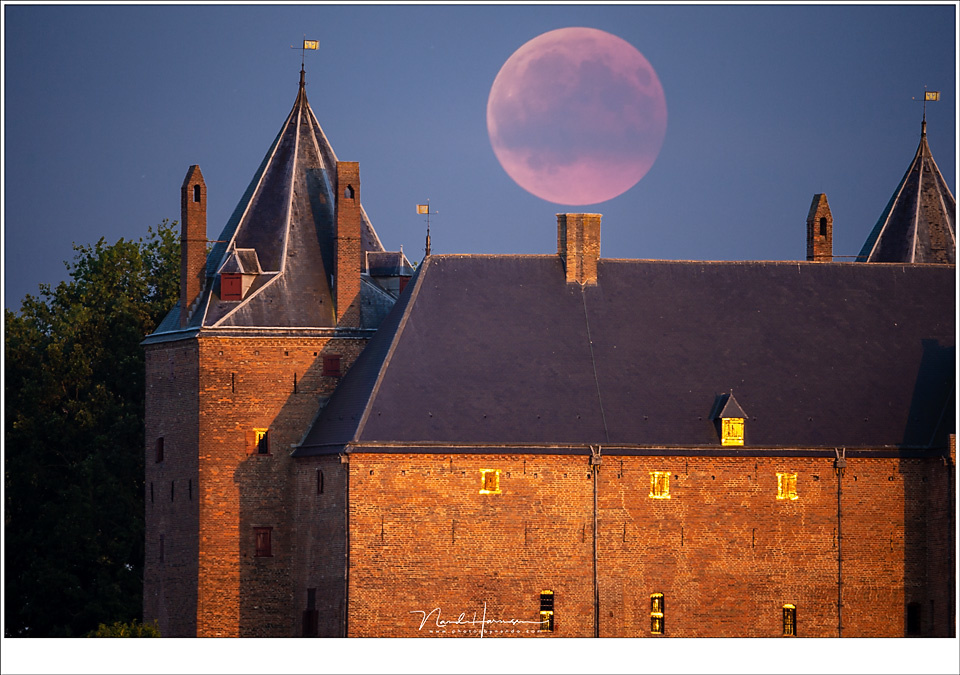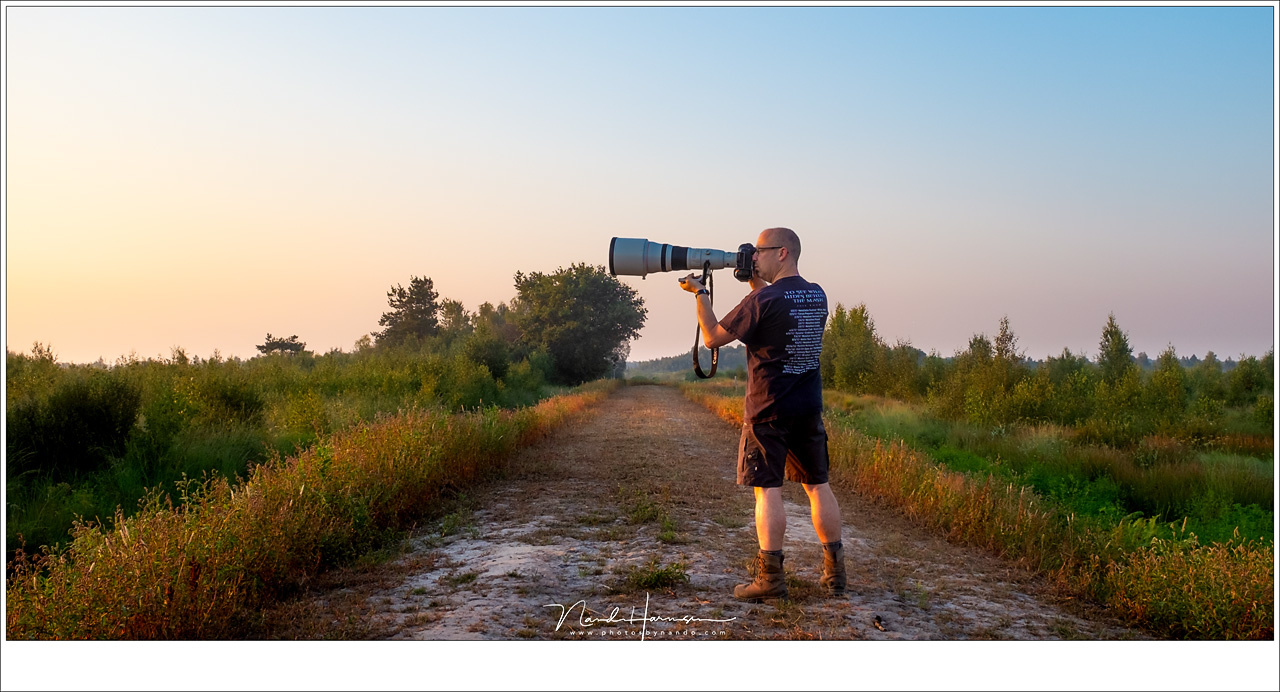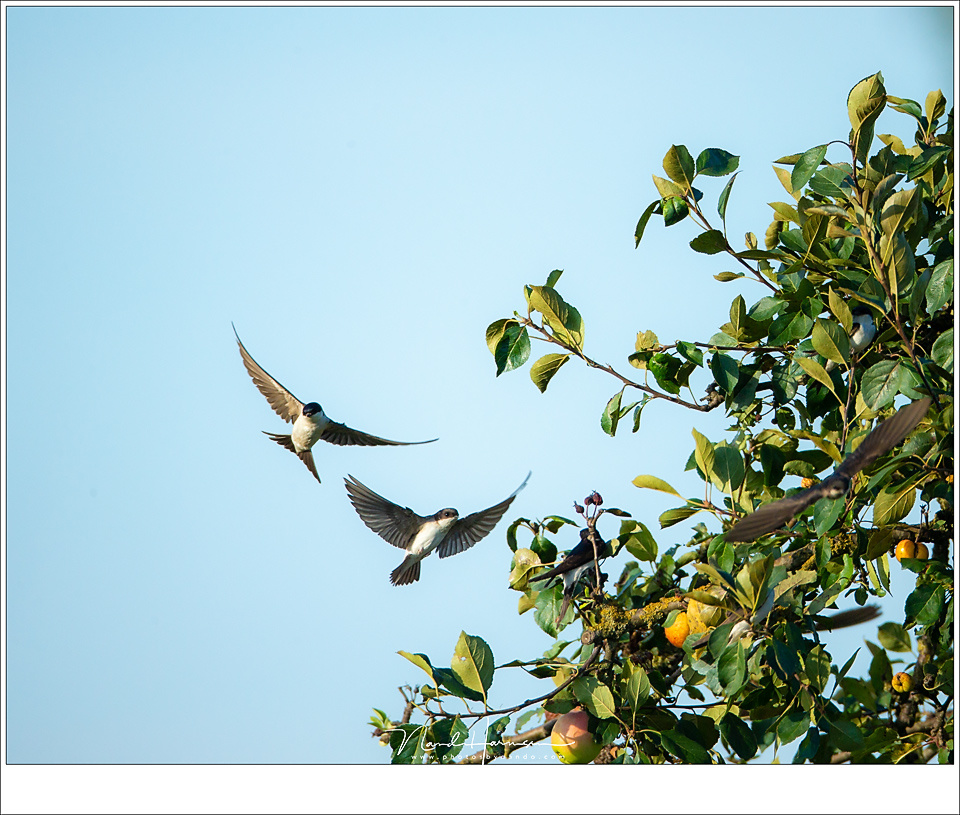I got the idea of shooting a total moon eclipse with a long lens. I was thinking about the Canon EF 500mm, but all I could get was a massive Canon EF 800mm lens. The lens turned out to be too long for the eclipse photo I had in mind, but I got a great opportunity to shoot for a while with this long and heavy white beast.
I had it all planned out. A moon eclipse would appear low at the horizon, so I had the chance to shoot it with a nice castle in front of it. I checked Photopills, the weather app, and the availability of a really long lens. I could work with my own Canon EF 100-400mm lens and a 1.4x teleconverter if necessary, but I preferred a larger aperture to keep the shutter up to speed without the need of very high ISO values. I wanted to use a Canon EF 500mm f/4L lens, but it wasn’t in stock. The next best thing was a Canon EF 800mm f/5.6L lens. So, I chose that one, not realizing how long it really was.

Ready for the moon eclipse, with my Canon EOS 1D X connected to the huge EF 800mm f/5.6L IS USM. I never had a lens so large and heavy as this one. But it has f/5.6 and it would be perfect for shooting the eclipse, or so I thought.
When I got to the location, it became clear this wasn’t going to work. The angular width of the castle and eclipsed moon was larger than the angle of the lens. So, I skipped the idea and used my Canon EF 70-200mm f/2,8L lens for that.

This is the photo I had in mind. But I failed, partly because the focal length was too long. This photo is the result of two photos I made with the EF 800mm stitched in Photoshop.

This was the reality, shot with my trusty EF 70-200mm at 120mm focal length. If you compare this photo with the previous one, you can see what difference the 800mm makes compared to 120mm. It is amazing. (EOS 5D IV 120mm | ISO 1,600 | f/4.5 | 1 sec)

A selfie, being brave with that heavy EF 800mm lens. The lens and camera weighs 6 kilograms. It is possible to shoot like this, thanks to the 4-stop image stabilisation, but the only proper way is with a monopod or a sturdy tripod.

An impression of the EF 800mm lens. It is a wonderful lens, well built and with lots of possibilities concerning autofocus, lens stabilization and focus limiters. You can even drop in a filter if you like, because the front lens element is too large for filters.

The EF 800mm f/5.6L lens next to the EF70-200mm f/2.8L lens, both without lens hood. It brings things into perspective, doesn't it?
It is the largest lens Canon has for sale – the Canon EF 1200mm f/5.6L doesn’t count – but not the most heaviest one. The lens weighs 4.5 kg and measures 46.1 cm without hood. The front lens has a diameter of 162 mms. It has 4- stop image stabilization, and thanks to that, you could shoot without a tripod. I have tried it and succeeded, but I wouldn’t recommend it unless you like power-lifting.
I tried to use the lens for some landscape photography, and although I like long lens landscapes, the EF 800mm is actually too long on most occasions. The problem is the lack of zoom capabilities; that would make it more versatile.

I do like landscapes with longer focal lengths, but the 800mm is a bit too much. Usefulness for landscapes is limited to only a few situations. A 400mm is more suitable. (EOS 1D X EF 800mm | ISO1,000 | f/5.6 | 1/250)
I used it also for some action photography, using the fast focus capabilities of the lens. But I discovered the focal length is often too long for this kind of photography. It is also too heavy for good tracking unless you have a proper gimbal setup. But when I photographed a dog running towards me, the necessary distances between camera and dog was too great to make it work. Before you have a series of shots, the dog is already too close.

For these kind of action photos, you need to have good distance. Before you know it, the subject is too close. But the autofocus tracking works well, as expected. (EOS 1D X EF 800mm | ISO 800 | f/5.6 | 1/1000)
I tried to shoot some birds. For this kind of photography, the lens is perfect. Well, almost perfect. As said, tracking flying birds is tricky, shooting moving birds in trees is difficult, and often the birds were too nearby. Again, the focal length is so long, and with a minimum focal distance of six meters, you often find yourself too close. Nevertheless, it was amazing using this lens for shooting birds and an occasional roe deer.

A Eurasian coot next to its nest. I could stay at a respectable safe distance, not disturbing anything, thanks to the long focal length. As a matter of fact, I stood on a bicycle path on the opposite site of the canal. (EOS 1D X EF 800mm | ISO 500 | f/6.3 | 1/400)

A roe deer, surprised to see someone with that ridiculous large white lens. I am quite sure I heard her laugh a bit. But I was able to capture her before the ran away. I used my tripod as a monopod for stability. (EOS 1D X EF 800mm | ISO 640 | f/5.6 | 1/125)
I even tried to shoot the International Space Station with this lens. I used the 1.6x crop EOS 7D mark II, together with a 2x teleconverter to have enough magnification. You end up with a whopping 2,560mm full frame equivalent. At first I tried it with a tripod, but I missed the flexibility because I did not had a gimbal head. So ,I took it off the tripod, and held it in my hand while tracking the fast moving Space Station. It was just for fun to try if it would be possible with this enormous focal length. And it worked out surprisingly well.

The International Space Station. Shot out of hand, with a 2x tele-converter and a 1.6 crop camera (2,560mm FF equiv.), tracking the fast moving star in the evening sky. The image may not be award winning, but I succeeded capturing it (EOS 7D2 EF 800mm 2x TC | ISO 6,400 | f/11 | 1/200)
It was fun having this amazing EF 800mm f/5.6 lens in my possession for some weeks. I loved using it, and I shot some nice photos with it. But I never want to have this lens for my own. The focal length is too long, the lens is too heavy, and it needs a large lens bag of its own. All this makes it usefulness very limited. Although this lens only costs €9,000 second hand, it is way too expensive for those few occasions it will come at hand. I think a focal length of EF 500mm would be more versatile, although that lens also needs its own bag. To be honest, I think an EF 100-400mm lens is still the best choice.

The Eurasian coot, or common coot during its bath. These black birds with white beaks are always difficult to expose correctly. I hoped to shoot a fishing pair of coots, but I did not succeed in that. (EOS 1D X EF 800mm | ISO 1,250 | f/5.6 | 1/1250)

A jong swan in the sunlight. It is amazing how fast the frame will be filled with 800mm. But sometimes it is better to have a bit of environment also. (EOS 1D X EF 800mm | ISO 800 | f/5.6 | 1/1250)

This is at its closest focal distance, which is about 6 meters. I had to lean back because the little barn swallow was almost too close. I shot this beautiful bird from my car, with the lens on a bag (EOS 1D X EF 800mm | ISO 800 | f/5.6 | 1/640)

Six common house martins are in this picture. Can you find them? I found it difficult tracking these small, fast birds, and I had to shoot a lot of pictures before I had something that was to my satisfaction. (EOS 1D X EF 800mm | ISO 500 | f/6.3 | 1/2,000)

This is how I preferably have birds in the picture: a moody environment, with beautiful sunlight and some space around the bird. I took this photo from an observation cabin, but the front of the EF 800mm was almost too large for the viewing ports. (EOS 1D X EF 800mm | ISO 125 | f/5.6 | 1/200)

During my hike through the nearby nature park, I managed to capture this European stonechat. Normally, these small birds are too far away, but not with an EF 800mm. Finding them in the viewfinder can be quite tricky though. (EOS 1D X EF 800mm | ISO 100 | f/6.3 | 1/400)

Canadian geese foraging in a field in the golden light of sunset. The compression of the long focal length shows the faraway trees in a beautiful perspective to the birds.(EOS 1D X EF 800mm | ISO 640 | f/5.6 | 1/125)
Have you ever photographed with this kind of lens? If so, what do you use it for, and what is your experience with it? Or do you think the use of these kind of lenses is too limited? I'd love to read about it in the comments.







That would have been the solution if the location made it possible. But unfortunately that was not possible
Better to get close w shorter lens .. use telescope in case you want to do Astro
This monster {any lens 800 mm or more} just not practical in size, weight, cost. The most impractical way to spend your time and money.
Article is another snow job sales motivation article ..
Sure. Book a flight to the ISS with your 24 to 105.
Better with telescope wise ass
Must be tough going through life being so humourless. I was obviously joking.
I believe you missed the point. Closer with a short lens would not give the perspective I wanted, just like Pat OConnor already mentioned
Perhaps you would like to share why a telescope would be better?
I love nature photography. I wish I could afford this lens!
I agree! If I had the dinars, I'd have one.
Brutal lens :)
Never used a lens like this but I did shoot a sporting event with a 300mm f2.8 and crowds would veer away from me like I was a shark swimming through a school of fish. Back off people, we don't want no trouble.
You know it's a big lens when it's the size of a keg of beer and the recoil will break your shoulder.
I had the same experience when I hiked with my EF100-400; first question I got was if I worked for NatGeo. The answer is always yes, with a big smile
hahaha
I shoot wildlife with the 600/4 IS II, probably 90% of my shooting is with this lens. When I purchased I looked at the 800/5.6 but the 600 with the 1.4III TC gets me to 840/5.6 and for me no noticeable loss in detail or focus speed.
I've had it now for two years and it's the best piece of equipment I ever bought and would buy it again tomorrow if I had too. I don't have a negative thing to say about it.
Same train of thoughts here. Never been happier with a lens than with my trusty 600/4 IS II (with occasionally the 1.4x III extender) :)
I think a 600mm with 1,4TC is indeed the better choice
Shooting the ISS handheld... WOW !
Seriously. That made my eyebrows go up.
ISS is moving across the sky in 5 minutes. It is really fast, so you need to use a fast shutterspeed. With those shutterspeeds you can actually hold this lens... for about a few seconds
It was tough
OMG! Those prices! Even renting these things is expensive!
need to mount it on an armoured vehicle or shoot from the top of a mountain !!
Does it come with a cart?
Just a suitcase :)